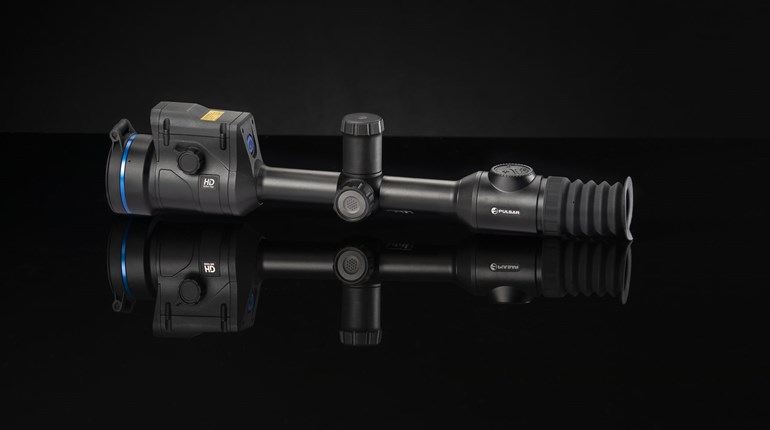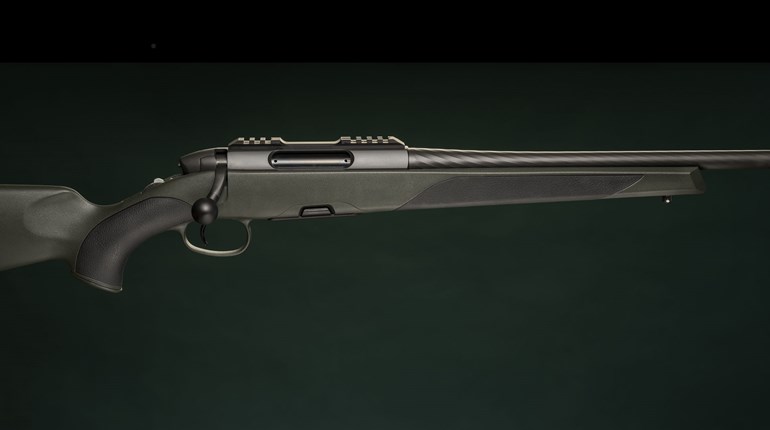
The Bible among disciples of the shotgun—the “NRA Firearms Fact Book”—defines choke as: “Muzzle constriction of the bore of a shotgun or tube that influences shot-pattern density and dispersion.”
In other words, a shotgun choke is like a water hose: By manipulating the nozzle, you can choose a narrow, powerful stream that goes perhaps 10 yards, or a wide stream that goes maybe 10 feet.
In terms of shotguns, the narrower—or tighter—the choke, the denser the pattern and the more effective it is at longer range. But, the tighter the choke, the narrower the pattern, and so it can be easier to miss. Therefore, for stationary targets at long range, like say, a standing deer at 50 yards, a tight choke is preferred because hunters need to put as many pellets as possible into that deer’s vital zone. Whereas a full choke and quality load might put five out of nine 00-buckshot pellets into the zone, the same load through a cylinder choke might only deliver one or two, with the other pellets hitting the deer in non-vital areas or missing it entirely. Conversely, for close or moving targets such as a home intruder at seven steps, less choke is preferred due to its larger pattern.
In the old days, shotgun barrels were built with “fixed chokes” from the factory, but nowadays most shotguns feature “screw-in” choke tubes that allow the shooter to alter the shotgun’s pattern for its intended use.
Although there are others, five choke sizes are most common. They are (in order of the most constrictive to least): Full, Improved Modified, Modified, Improved Cylinder and Cylinder (no choke). What follows are the actual measurements of each choke, keeping in mind that an unchoked bore of a 12-gauge shotgun measures .729 inch internally.
Full choke: .036-inch constriction; .693-inch resulting bore size; 70 percent of pellets in a 30-inch circle at 40 yards.
Improved Modified: .022-inch constriction; .707-inch resulting bore size; 60 percent of pellets in a 30-inch circle at 40 yards.
Modified: .011-inch constriction; .718-inch resulting bore size; 50 percent of pellets in a .30-inch circle at 40 yards.
Improved Cylinder: .007-inch constriction; .722-inch resulting bore size; 40 percent of pellets in a 30-inch circle at 40 yards
Cylinder: No constriction; .729-inch bore size; 30 percent of pellets in a 30-inch circle at 40 yards.
Fact is, “scatterguns” are not the street sweepers their Hollywood-driven reputations suggest. An average load of modern 00 buckshot from a cylinder-choked barrel fired down a hallway will typically spread out just 8 to 10 inches at 10 yards, not the 6-foot width of the entire hallway that many people seem to believe. Although a spread of 1-inch per yard of distance is a standard rule of thumb, I generally find cylinder-choke/00 buckshot loads spread slightly less than that, more like 8 inches at 10 yards and 15 inches at 20.
While there are many variables to shotgun spread—the main ones being load choice, pellet material, choke and distance—often individual shotguns will pattern slightly differently than the next even if they are choked the same. So, the key is to first determine your likely shooting scenario. Then, pick a choke accordingly, choose a load, and test that load on paper to see what your pattern actually looks like at various distances. If the pattern is too big and skimpy, so small that it looks more like one massive projectile than a spread of individual pellets or the spread is wildly non-uniform, try another choke and/or load combination.
As a general rule, the more expensive the load, the less it will spread, because more expensive loads tend to use high-tech wads, copper-plated shot and buffer material that mitigate spread and flyers. Often these loads are used for hunting. Take Federal’s Flite Control loads, for example. These expensive loads consistently produce very tight patterns, and therefore are better for longer ranges and not the most desirable for very close shots.
Books have been written on the nuances of chokes and loads for small game and waterfowl. But, because this is Shooting Illustrated where we focus on home defense, I’ll leave you with this: For most defensive purposes, in most scenarios where an engagement should be less than 20 yards, shooting 00 buck through Cylinder choke is usually your best bet. If, after testing, it seems a little too open for your liking, try Improved Cylinder.
See? It’s pretty simple.




































